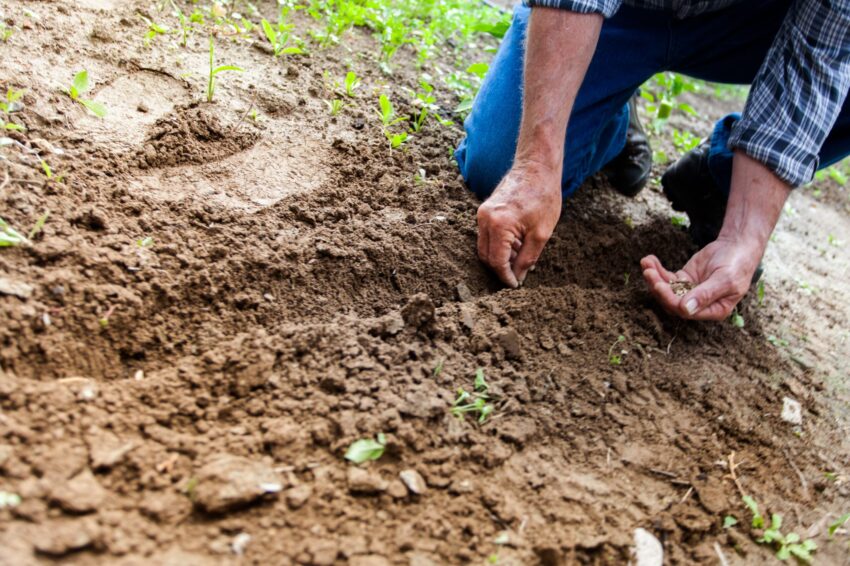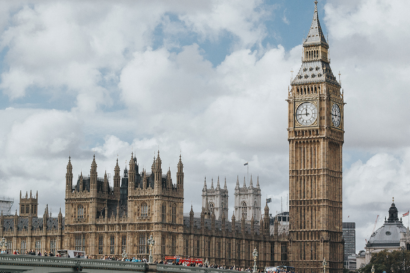AG INSIGHT | 11/12/2023
Regenerative Landscapes – new hope for food systems transformation

Amidst the noise surrounding COP28, a UNFCCC Global Stocktake that lays bare our failure to act at anything like the speed and scale needed to ‘keep 1.5 alive’, and a growing sense of anger that climate finance still isn’t flowing to those that most need it – Indigenous Peoples and Local Communities, Smallholder and Family Farmers, rays of hope can be found in the food systems change agenda. Despite news that formal negotiations on food and agriculture have stalled, important foundations have been laid for accelerating action.
After years on the fringes of the COP agenda, despite its criticality to delivering Paris emissions reduction targets, Food Systems Transformation finally seems to be getting the recognition it deserves, establishing itself at the heart of the debate. Over 130 countries have signed a ‘COP28 UAE Declaration on Sustainable Agriculture, Resilient Food Systems, and Climate Action.’ and over 150 non-state actors have signed a call to action for transformation of food systems for people, nature and climate. It’s an important milestone, but it’s just a start.
In parallel, the notion of ‘Regenerative Landscapes’ has risen to the fore as a primary focal point for transformation; One that is capable of driving large scale change that delivers benefits for people, nature and climate; that can boost food security in the world’s most climate vulnerable regions, can restore prosperity to rural communities, create exciting green jobs for young people who are turning their backs on farming, and build resilience where there is currently degradation.
In this, there is much hope, but we should be under no illusion about the scale of the task ahead. Just over 10% of the world’s agricultural land is currently managed with some form of regenerative practice, and the Global Alliance for the Future of Food have put the price tag to get this to 50% by 2040, at $250-430 billion per year. Currently, only one tenth of that amount is flowing and only a tiny fraction of that is reaching farmers.
Finance of this scale and with these deployment challenges cannot be delivered without major commitment of the private sector. In turn, the private sector needs ‘derisking’, and that can’t happen without major interventions from government, philanthropy, and crucially climate finance. Blended Finance will be crucial, yet there are currently no large scale blended finance facilities focused specifically on scaling regenerative agricultural landscapes. Working in close partnership with Green Climate Fund and other partners we aim to correct that gap by COP29.
The truth is, that for all the justified excitement around ‘regenerative landscapes’, we are a long way off realising their potential, and a difficult set of interconnected issues, dilemmas and challenges must be tackled as we do so.
How we resolve these will lay the foundation for how future generations will feed themselves.
What do we really mean by ‘Regenerative’? – the danger of incrementalism
There are already strong voices expressing concern that ‘Regenerative’ is being co-opted by incumbent large players to protect their interests, that it’s just the next wave of green-washing and a veneer to perpetuate a broken system. Only time will tell but we need to be clear eyed that there are shades of ‘regenerative’ and some of the lighter shades are a far cry from the fundamental systems transformation needed.
Systems don’t ‘change’, they get displaced when better systems emerge
Renewable energy, electric vehicles, mobile telephony have all followed a similar path. Early prototypes are ridiculed, face accusations from vested interests that they’re too costly, technically inferior, and unable to ‘scale’. Then they get good, cheaper, and better, and people realise it’s just a better all-round option. ‘Regenerative Landscapes’ will be no different, but we need to be resolutely focused on true systems innovation and redesign rather than tweaking the current system and calling it ‘regenerative’. We need to create the space and provide the funding for ‘better’ to be demonstrated at scale. India’s Andra Pradesh Community Natural Farming initiative being one such beacon of inspiration.
Unresolved tensions and the need for a new kind of transformative partnership
Complex tensions are beginning to emerge at the heart of the battle for what ‘regenerative’ really means when it comes to food systems, and ‘Regenerative Landscapes’ are where these tensions will play out. Particularly:
- The desire for speed and scale versus the need for inclusion, participatory approaches and a just transition.
- The need of global players to maximise profit versus the acute need to economically empower farmers and local communities that will drive the change.
- The demand for global commodities at scale versus the need to localise and diversify production in a regenerative system
These tensions can only be resolved through dialogue, and dialogue takes time. This time is essential, for the real currency of change is trust, and in the food system, trust is in short supply.
Real change will only come if we ‘move at the speed of trust’. All actors need to be at the same table resolving these dilemmas – farmers, governments, companies, finance providers, philanthropy, local communities. We must work through complex questions about how risk, cost and value can be fairly distributed. There must be a new era of transformative public-private-community partnerships that work toward a shared vision, approached landscape by landscape, country by country, with place-based and context specific approaches. Such partnerships are few and far between. Yet we need them everywhere.
As an often-cited proverb states – ‘If you want to go fast go alone. If you want to go far, go together’. But what if we need to go fast and go together? To that, we don’t yet have good answers. Maybe with Regenerative Landscapes we will find them. To give ourselves the best chance, we must seize the momentum created by COP28, and harness COP29 and COP30 as springboards for a ‘Regenerative Landscapes’ movement that will change the fundamentals of what and how we produce food, what we eat, and how value from such a system is distributed across the system.
The only things stopping us will be a lack of imagination, courage, trust, and the kind of bold action future generations will rightly hold us to account for. For now, there is some hope that we can deliver, but the hard work lies ahead of us.



